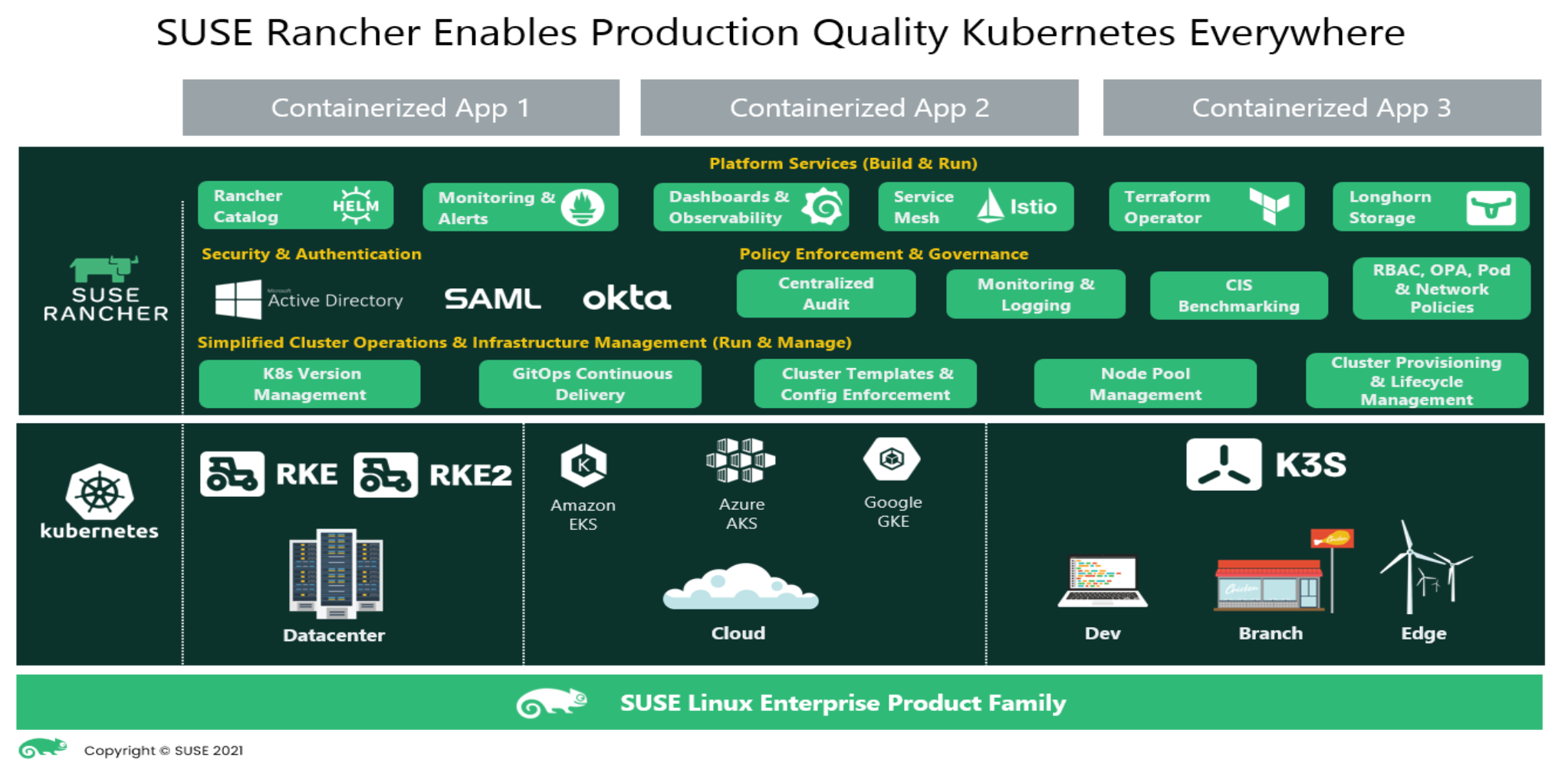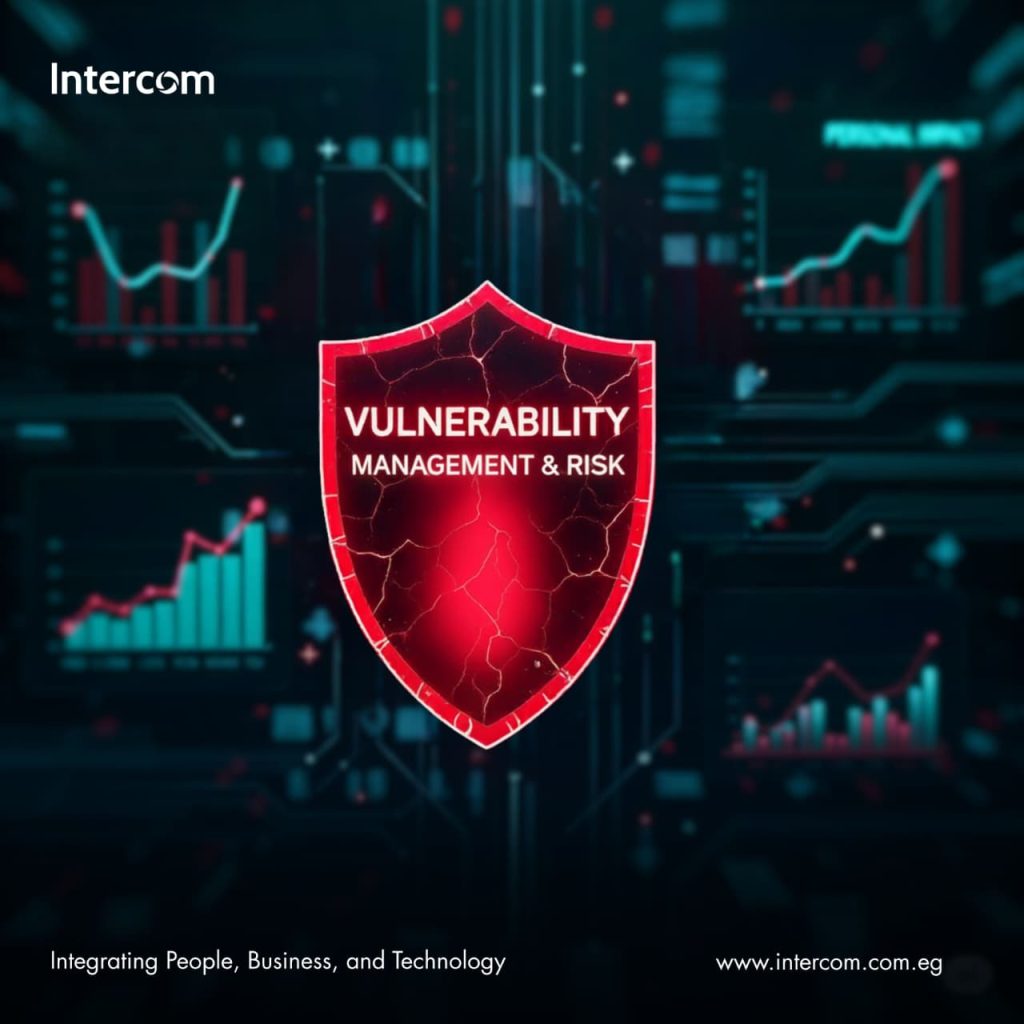
Kubernetes is powerful … it’s the foundation of modern applications and the key to scaling in today’s digital world. But let’s face it: running Kubernetes at an enterprise level isn’t easy. Managing multiple clusters, staying secure, and keeping compliance in check can quickly become overwhelming.
That’s where SUSE Rancher + RKE2 come in. Together, they transform Kubernetes from a complex challenge into a secure, manageable, and scalable solution that organizations can rely on.
Why It Matters
Enterprises don’t just need Kubernetes; they need Kubernetes they can trust. Rancher and RKE2 deliver exactly that by combining enterprise-grade security with simplified management.
RKE2 (Rancher Kubernetes Engine 2):
A hardened, production-ready Kubernetes distribution built for enterprises. RKE2 is designed with strict security and compliance in mind, ensuring workloads run reliably across bare metal, virtual machines, or cloud environments.
Why it matters: RKE2 guarantees stability, performance, and compliance from day one, making it safe to run mission-critical workloads without compromise.
Rancher:
A centralized platform for managing Kubernetes across any environment on-premises, cloud, or edge. Rancher gives IT teams a single, intuitive dashboard to monitor clusters, enforce policies, and control access.
Why it matters: Rancher removes the operational burden of managing multiple clusters and makes Kubernetes governance, monitoring, and security seamless.

The Benefits for Organizations
Faster, Reliable Deployment
With RKE2, organizations can spin up secure Kubernetes clusters in a fraction of the time. This accelerates time-to-market for new applications and ensures deployments are consistent across environments.
Centralized Management Across Environments
Rancher eliminates the complexity of managing multiple Kubernetes clusters scattered across hybrid or multi-cloud setups. IT teams gain a single pane of glass for visibility, control, and monitoring, which reduces operational overhead.
Enterprise-Grade Security and Compliance
Security is built into every layer of Rancher and RKE2. Automated patching, CIS benchmark compliance, and role-based access controls help organizations meet strict regulatory requirements such as GDPR, HIPAA, or PCI-DSS without added effort.
Scalability Without Limits
Whether you’re running 10 nodes or 10,000, Rancher and RKE2 scale with your business. Enterprises can grow confidently, knowing that their Kubernetes infrastructure will expand without performance bottlenecks.
Streamlined Application Delivery with Helm
Helm integration allows teams to deploy even the most complex applications in minutes. Standardized templates reduce human error, while customizable charts give teams the flexibility to adapt to business needs.
Freedom of Choice, No Lock-In
Our services support any CNCF-certified Kubernetes distribution. This vendor-neutral approach means organizations remain flexible, free to run workloads across AWS, Azure, Google Cloud, or private data centers without being tied to a single provider.
Empowering DevOps and Innovation
By simplifying operations, Rancher and RKE2 free up IT teams to focus on innovation. Developers can deliver new features faster, while operations teams maintain confidence in stability and compliance.
The Bottom Line
Kubernetes doesn’t have to be a maze of complexity. With SUSE Rancher + RKE2, organizations gain the confidence to run Kubernetes at scale, securely, efficiently, and with complete control.
It’s not just about managing containers; it’s about building a future-proof foundation for innovation.
Ahmed Shaaban
Technical Manager – IT Systems Solutions
Ahmed ElGhamrawy
Senior Technical Engineer – IT Systems Solutions

 Ever get the feeling that cybersecurity is a never-ending game of whack-a-mole? Close one vulnerability, and another pops up!
Ever get the feeling that cybersecurity is a never-ending game of whack-a-mole? Close one vulnerability, and another pops up!